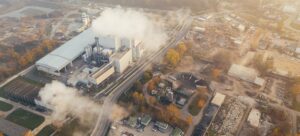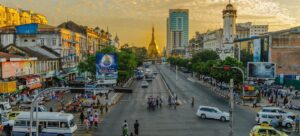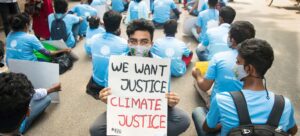Ahead of the two-day meeting, the Committee Chair, Ambassador Ruchira Kamboj of India, spoke to UN News about how terrorists are exploiting social media, mobile payment systems, 3D printing, and other technological developments.
Highlighting the impact on society, she said their “easy accessibility, affordability and almost universal outreach, have unlocked an immense opportunity for mankind, while also exposing vulnerable users to actors with nefarious agendas.”

Spreading terrorist propaganda
Ms. Kamboj explained how “the rampant use of social media for terrorist purposes to spread terrorist propaganda”, was particularly exposed during the COVID-19 pandemic.
Terrorist groups took advantage of young people’s increased presence online during the crisis “to spread their propaganda and distorted narratives to recruit and raise funds for terrorist purposes,” she said.
Beyond the Internet and social media, other innovations that benefit society – such as artificial intelligence, robotics, and synthetic biology – are also sparking concerns because they can potentially be used for terrorist aims.
Attacks involving unmanned aircraft systems (UAS), such as drones, are now being reported in many conflict zones, further complicating their legitimate use.
Two sides of the same coin
Ms. Kamboj expects that at the meeting, UN Member States and experts from the private sector, academia, and civil society, will discuss best practices to “share information to detect and prevent acts of terrorism, bring perpetrators to justice, and to support victims of terrorism.”
This interview has been edited and condensed for publication.
UN News: What inspired the theme for this special meeting? Are there any figures showing the increased use of new technologies by certain groups, or were there any specific incidents that sounded the alarm over the relevance of these new methods?
Ruchira Kamboj: The use of new and emerging technologies for terrorist purposes is an issue of increasing concern. Member States already face a significant and growing threat from the exploitation of the Internet and social media platforms to facilitate a wide range of terrorist activities.
Terrorists are taking advantage of online spaces to build networks, procure weapons and garner logistical and financial support.
Further issues of concern are the use of emerging payment methods – such as pre-paid cards and mobile payments, or virtual assets and online funding methods such as crowdfunding platforms – for terrorist purposes. There is also the potential for use of emerging technologies to include unmanned aircraft systems (UAS), artificial intelligence, robotics, synthetic biology, self-driving cars, and 3D printing, to further terrorist aims.
We have to remember, of course, that technology is used for good. Many of the technologies I just mentioned are also incredibly useful tools and communication services used by a large percentage of the global population.
The Security Council has focused attention on addressing new technologies in a number of counter-terrorism resolutions focused on law enforcement and border control, aviation security, and the protection of critical infrastructure and soft targets.
The Council’s most recent resolution on counter-terrorism, Resolution 2617 of December 2021, specifically refers to other emerging technologies, giving notice to the increasing threat posed by their use for terrorist purposes. In this resolution, the Council notes with concern the increasing global misuse of UAS by terrorists to conduct attacks and acknowledges the need to balance fostering innovation and preventing misuse of use as its applications expand.
Missed the #UNCTCEmergingTech press briefing in New Delhi?
@UNWebTV has got you covered.
📺 Watch full briefing here: https://t.co/DVqtqoxxpz
Visit us for info on the Security Council Counter-Terrorism Committee special meeting: https://t.co/SDQ1wY6ccF
DM us for media queries
UN_CTED
October 27, 2022
UN News: What are the main results that the meeting hopes to achieve?
Ruchira Kamboj: The special meeting will provide an opportunity to discuss how new technologies are currently exploited for terrorist purposes, as well as how the terrorist threat from this exploitation is likely to evolve and grow as new technologies are developed and taken up by all kinds of users.
The discussions would additionally focus on ways in which States and other relevant actors can strengthen their engagement and cooperation with each other in countering the use of new and emerging technology for terrorist purposes, including the financing of terrorism.
As ever, when examining terrorism and counter-terrorism responses, human rights and gender dimensions are crucial components of the conversation.
A key result is to understand how States are responding to these evolving threats in a manner that complies with their human rights obligations, and to encourage all our partners to ensure that human rights are respected as we seek to keep pace with ever-evolving technologies.
UN News: What are the Committee’s main recommendations for Member States to assess the issue of new tech and terrorism?
Ruchira Kamboj: The use of new and emerging technologies to prevent and counter terrorist activities can be a very effective and powerful tool if employed while fully respecting international human rights law. The purpose of the meeting is to learn from the experience of Member States how to strike the right balance.
UN News: Will discussions also examine how other sectors, such as financial markets and private companies, can take action to mitigate the issue?
Ruchira Kamboj: The answer to that is a ‘yes’. The special meeting will provide an opportunity for participants to focus on what steps could be taken to further develop and utilize public-private partnerships, explore safety by designing good practices, and create oversight, transparency and accountability mechanisms.
We are especially looking to hear from our private sector, academia, and civil society partners what initiatives they are working on in this regard.
Private sector actors as well as Member States have also increased the use of digital technologies to identify, prevent and halt the financing of terrorism via online methods. When used responsibly and consistent with international law, technology can facilitate data collection, processing and analysis, and help actors identify and manage terrorist financing risks more effectively and closer to real time.
The practices of data pooling and collaborative analytics can help financial institutions better understand, assist and mitigate money laundering and terrorism financing risks. There are also a number of positive uses for UAS to counter the movement of terrorists across borders, thwart terrorist operations, and secure public spaces and major events.
There are also a number of technologies being deployed to prevent UAS from being used for terrorist purposes.
UN News: Considering the assessments done by the Committee, what are the most harmful impacts on civilians of the use of these new methods, especially with regard to social media?
Ruchira Kamboj: Easy accessibility, affordability, and almost universal outreach of new and emerging technologies, on the one hand, have unlocked immense opportunities for mankind, while on the other hand has also brought them together in a close-knit environment, particularly exposing vulnerable users to actors with nefarious agendas.
For example, during the pandemic, the heightened online presence of youth has been exploited by terrorist groups to spread their propaganda and distorted narratives to recruit and raise funds for terrorist purposes.
We have seen rampant use of social media for terrorist purposes to spread terrorist propaganda. So, the easy access, availability, affordability, and universality of new and emerging technologies have impacted every section of society.
On the other hand, extensive application of counter-terrorism measures has also raised serious concerns.
Experience has shown that indiscriminate use of technologies to counter terrorism can alienate populations and negatively affect violent extremism and counter-terrorism efforts. The UN consistently promotes a holistic, all-of-society and comprehensive approach to address the many challenges that arise around countering terrorism and violent extremism conducive to terrorism online. Civil society organizations, academia and private sector entities have important roles to play in this regard.
UN News: Given the current scenario, is the Committee optimistic that the Security Council will reach a final agreement?
Ruchira Kamboj: Well, there is not necessarily any final agreement to be reached when it comes to preventing the use of new and emerging technologies for terrorist purposes.
Given the trajectory of technological development driven by science, curiosity, profit and users, there is no obvious end in sight to what could be created. And that means there is no predictable end stage for what we do on the evolving terrorist landscape as any technology has the potential to be misused.
Each member of the Security Council and its Counter-Terrorism Committee is committed to an approach to countering terrorism that respects the rule of law in compliance with their obligations under international law.
And to that end, the Committee and the Council remain seized of the issue and will continue to operate to fulfill the mandates as given under the various Security Council resolutions on counter-terrorism.
Missed the #UNCTCEmergingTech press briefing in New Delhi?
@UNWebTV has got you covered.
📺 Watch full briefing here: https://t.co/DVqtqoxxpz
Visit us for info on the Security Council Counter-Terrorism Committee special meeting: https://t.co/SDQ1wY6ccF
DM us for media queries





















